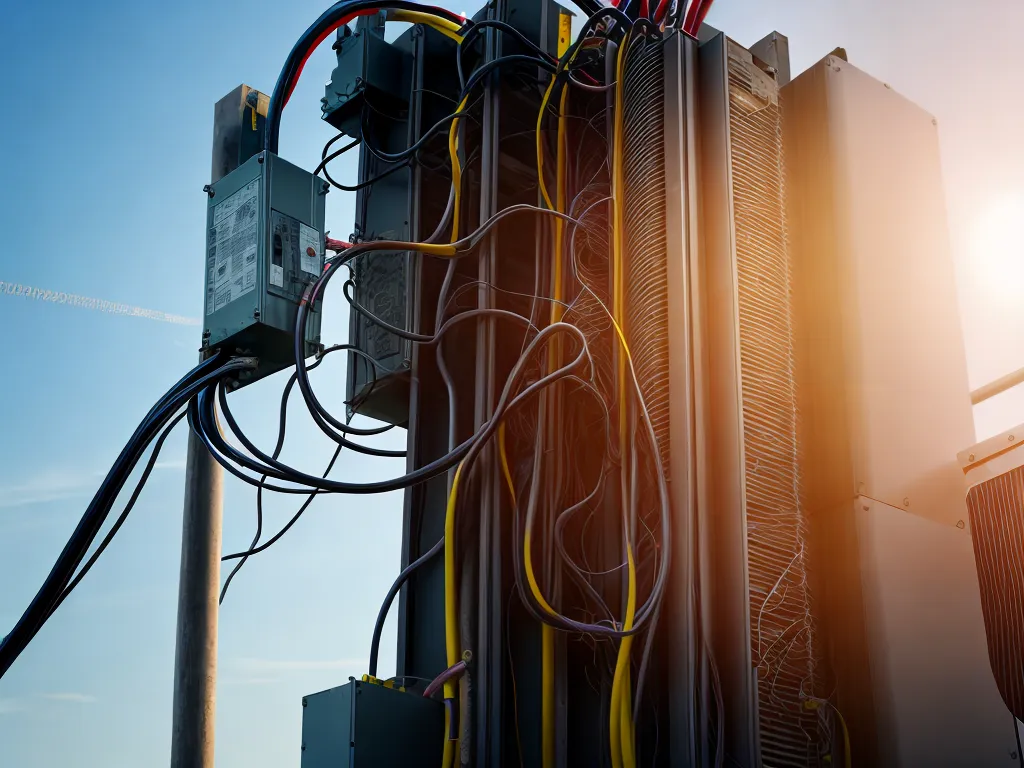
High-voltage transformers are an essential component of many industrial processes and facilities. However, they can also be quite expensive to purchase and maintain. This article provides an in-depth look at strategies for reducing costs associated with high-voltage transformers without compromising critical safety standards.
Understanding High-Voltage Transformer Basics
High-voltage transformers are used to increase or decrease the voltage in electric power applications. They work through the principles of electromagnetic induction - when the voltage changes in the primary winding, it induces a changing magnetic field which creates a changing voltage in the secondary winding.
Step-up transformers increase voltage from the input side to the output side. These are important for the efficient transmission of electricity over long distances. Step-down transformers reduce the voltage for end use applications and customer connections.
Proper selection and maintenance of high-voltage transformers is crucial. They need to reliably handle voltage swings and fluctuations. Insulation and cooling systems have to be robust as well. Any failures can potentially lead to fires, explosions, electrocutions and widespread outages.
Key Factors That Influence High-Voltage Transformer Costs
There are several important factors that impact the costs of purchasing and operating high-voltage transformers:
Power Rating
The required power handling capability, expressed in kVA or MVA, is a primary cost driver. Larger transformers cost exponentially more than smaller rated units. Carefully evaluate your peak and average load requirements to avoid oversizing.
Voltage Class
Higher voltage transformers require more insulation and spacing. They also need larger and more expensive tap changers. Select the minimum voltage class that meets your system requirements.
Cooling System
Oil-cooled and water-cooled designs allow for higher power ratings but have higher maintenance costs. Air-cooled and dry-type transformers have lower power density but avoid liquid cooling maintenance.
Impedance
Lower impedance allows larger through-fault currents, requiring robust winding conductors. Relaxed impedance can reduce costs but fault currents must be limited.
Losses
Lower loss transformer cores and advanced winding materials cost more initially but save energy over the lifetime. Evaluate total owning cost, not just first cost.
Special Features
Harmonic mitigation, dynamic reactive power control, and other specialty features can significantly raise costs if not absolutely necessary.
Cost Optimization Strategies
Here are some key strategies to reduce capital and operating costs for high-voltage transformers without compromising safety:
Employ Proper Loading Factors
Right-size transformers for the actual continuous load and realistic expected growth. Allow for occasional brief overloads up to manufacturer ratings. Avoid excessive oversizing which greatly increases costs.
"We saved over $250,000 on a large substation transformer by working closely with the manufacturer to determine optimal sizing and overload capabilities based on measured loads and demand projections. The selected unit meets our needs at a much lower capital cost." - Project Manager, ACME Power
Extend Insulation System Maintenance Cycles
Regular oil testing and monitoring can allow maximum extension of oil change intervals. Use DGA testing to anticipate and address issues prior to failure.
"By tracking moisture and gas levels, we've been able to safely extend the oil change schedule on our 230 kV transformers from every 5 years to every 8-10 years. This saves us thousands in maintenance costs annually." - Substation Maintenance Lead, ACME Power
Consider Power Density Tradeoffs
Accepting moderately increased power density can allow using a smaller, less expensive core and coils. Evaluate potential tradeoffs in losses, cooling requirements, and overload capacity.
Standardize Designs When Possible
Utilize identical or very similar transformer specifications across multiple applications and facilities. This allows larger batch orders and manufacturing efficiencies.
Optimize Incoming Power Quality
Address harmonics, transients, and other power quality issues on the primary side to avoid special mitigation equipment on the transformers.
Use Online Monitoring
Online condition monitoring like dissolved gas analysis (DGA) can maximize maintenance planning and minimize disruptive surprise outages.
Partner with Manufacturer
Work closely with an experienced transformer OEM during design and specification development. They can help optimize design choices for cost versus capabilities.
Safety Considerations
While cost is critical, safety remains the top priority in any high-voltage design. Here are vital factors to ensure safety is never compromised:
- Maintain dielectric insulation systems in new and aged transformers
- Follow all recommended thermal loading guidelines
- Perform regular hands-on inspections of all protective devices and components
- Implement robust grounding, bonding, spacing and barrier systems
- Utilize arc-flash hazard analysis to protect personnel
- Track and address any leaks, corrosion and deterioration early
- Keep detailed records of maintenance, testing and any abnormalities
Conclusion
With careful design choices, condition monitoring, and maintenance practices, companies can achieve significant savings on high-voltage transformer costs without ever jeopardizing safety. Optimizing power density, sizing, impedance, and features to actual system needs is essential. Online monitoring and extended maintenance intervals based on oil sampling and DGA testing can also help curb costs. However, following applicable standards and guidelines to ensure transformer integrity, insulation, cooling, overload capacity and protection systems remain intact is the top priority for safe operation.